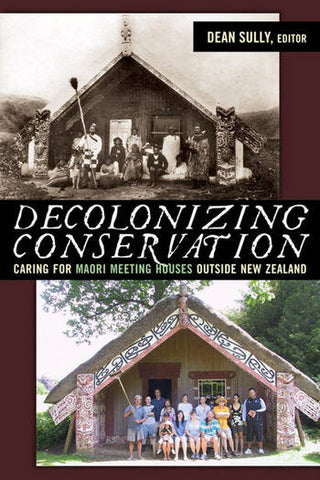Decolonizing Conservation : Caring for Maori Meeting Houses Outside New Zealand
- Unit price
- / per
-
Author:Dean Sully
-
ISBN:9781598743104
-
Publication Date:February 2008
-
Edition:1
-
Pages:272
-
Binding:Paperback
-
Publisher:Left Coast Press Inc
-
Country of Publication:USA


A Back Order button means that we don’t have the book in stock at our store. It may already be on order – or we can order it for you from a publisher or distributor at no additional cost.
As we source items from around the globe, a back-order can take anywhere from 5 days to several weeks to arrive, depending on the title.
To check how long this might take, you’re welcome to contact us and we can provide an ETA or any other information you need. We recommend checking the timeframe before committing to an online order.
Decolonizing Conservation : Caring for Maori Meeting Houses Outside New Zealand
- Unit price
- / per
-
Author:Dean Sully
-
ISBN:9781598743104
-
Publication Date:February 2008
-
Edition:1
-
Pages:272
-
Binding:Paperback
-
Publisher:Left Coast Press Inc
-
Country of Publication:USA
Description
This book argues for an important shift in cultural heritage conservation, away from a focus on maintaining the physical fabric of material culture toward the impact that conservation work has on people's lives. In doing so, it challenges the commodification of sacred objects and places by Western conservation thought and attempts to decolonise conservation practice. To do so, the authors examine conservation activities at Māori marae meeting houses located in the US, Germany, and England and contrasts them with changes in marae conservation in New Zealand.
A key case study is the Hinemihi meeting house, transported to England in the 1890s where it was treated as a curiosity by visitors to Clandon Park for over a century, and more recently as a focal point of cultural activity for UK Māori communities. Recent efforts to include various Maori stakeholder communities in the care of this sacred structure is a key example of community based conservation that can be replicated in heritage practice around the world.
Adding product to your cart
You may also like
A Back Order button means that we don’t have the book in stock at our store. It may already be on order – or we can order it for you from a publisher or distributor at no additional cost.
As we source items from around the globe, a back-order can take anywhere from 5 days to several weeks to arrive, depending on the title.
To check how long this might take, you’re welcome to contact us and we can provide an ETA or any other information you need. We recommend checking the timeframe before committing to an online order.
You may also like
You may also like
-
This book argues for an important shift in cultural heritage conservation, away from a focus on maintaining the physical fabric of material culture toward the impact that conservation work has on people's lives. In doing so, it challenges the commodification of sacred objects and places by Western conservation thought and attempts to decolonise conservation practice. To do so, the authors examine conservation activities at Māori marae meeting houses located in the US, Germany, and England and contrasts them with changes in marae conservation in New Zealand.
A key case study is the Hinemihi meeting house, transported to England in the 1890s where it was treated as a curiosity by visitors to Clandon Park for over a century, and more recently as a focal point of cultural activity for UK Māori communities. Recent efforts to include various Maori stakeholder communities in the care of this sacred structure is a key example of community based conservation that can be replicated in heritage practice around the world.
-
-
Author: Dean SullyISBN: 9781598743104Publication Date: February 2008Edition: 1Pages: 272Binding: PaperbackPublisher: Left Coast Press IncCountry of Publication: USA
This book argues for an important shift in cultural heritage conservation, away from a focus on maintaining the physical fabric of material culture toward the impact that conservation work has on people's lives. In doing so, it challenges the commodification of sacred objects and places by Western conservation thought and attempts to decolonise conservation practice. To do so, the authors examine conservation activities at Māori marae meeting houses located in the US, Germany, and England and contrasts them with changes in marae conservation in New Zealand.
A key case study is the Hinemihi meeting house, transported to England in the 1890s where it was treated as a curiosity by visitors to Clandon Park for over a century, and more recently as a focal point of cultural activity for UK Māori communities. Recent efforts to include various Maori stakeholder communities in the care of this sacred structure is a key example of community based conservation that can be replicated in heritage practice around the world.
-
Author: Dean SullyISBN: 9781598743104Publication Date: February 2008Edition: 1Pages: 272Binding: PaperbackPublisher: Left Coast Press IncCountry of Publication: USA
-



